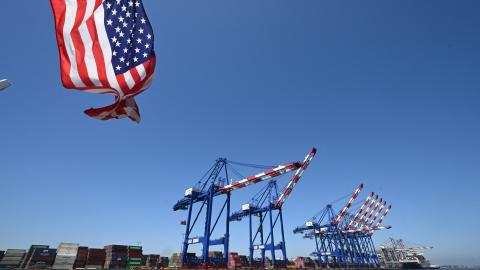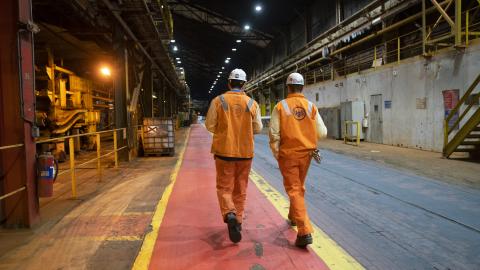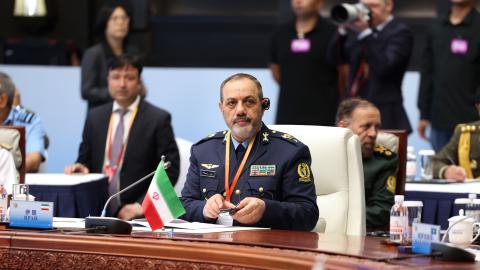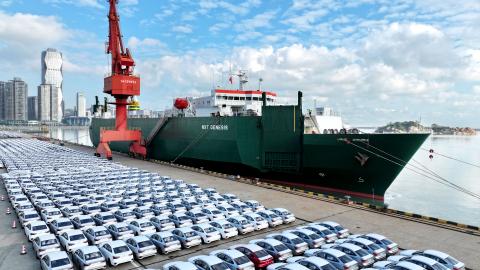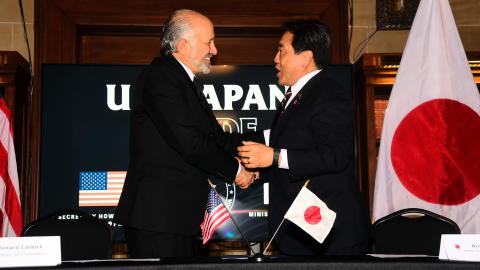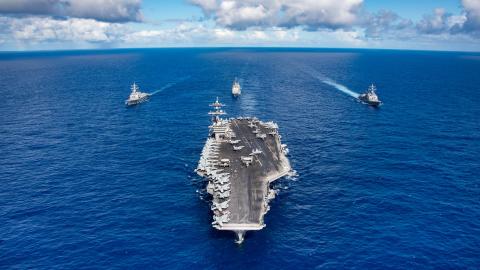The world has witnessed two momentous state funerals this month. The first was for Queen Elizabeth II, which reminded Americans of the “special relationship” with the U.K. that has endured for more than 70 years. The second, which took place in Tokyo on Tuesday, was for former Japanese prime minister Shinzo Abe — the first Japanese prime minister to be so honored since Shigeru Yoshida, who signed the peace treaty with the U.S. after World War II and who started Japan’s return to the family of nations. Although less noticed around the world, and more controversial in his home country than Queen Elizabeth’s in hers, the Abe funeral should remind Americans of the other “special relationship” still to come, the one with Japan: the indispensable ally that can help us counterbalance China’s growing power in the Indo-Pacific in the 21st century.
Certainly Abe, who was murdered by a deranged fanatic in July, has been Japan’s most decisive prime minister since World War II. It was Abe who set to work realigning Japan’s national power, including a 70-year standing alliance with the United States, with its stature as the third-biggest economy in the world, in order to meet the growing threat from China and its client state North Korea — and to make Japan the essential partner of America in stabilizing the region and preserving peace.
For Abe, the key to that realignment was not only scrapping decades of quasi-pacifist national policy. The realignment would also require leveraging his personal relationship with a new American president, Donald Trump, to secure the bonds of bilateral cooperation, and to advance Abe’s own strategic vision for a free and open Indo-Pacific stretching from Hawaii to the shores of Africa and India.
Now it’s up to the U.S. to take full advantage of what Abe built when it deals with his successors in the ruling Liberal Democratic Party, to advance our joint mission of thwarting China’s bid for global hegemony.
China’s aggressive posture in the South China Sea, its support for North Korean dictator Kim Jong-un’s nuclear and missile programs, and its spurious claims to Japan’s Senkaku Islands all drove Abe’s realization that the U.S.–Japan alliance was the key to thwarting the growing strategic threat from Beijing.
That threat was always uppermost during Abe’s tenure as PM, first in 2006–07, and then, more decisively, from 2012 to 2020 — the longest tenure for a prime minister in post-war Japanese history. For example, Abe realized that Japan’s government needed an administrative overhaul to compete geopolitically with China. He centralized national-security decision-making in the prime minister’s office by creating Japan’s first true national-security council in 2013. Two years later he pushed through comprehensive national-security legislation that opened the way for Japan to exercise the right of collective self-defense for the first time, allowing joint operational planning with the United States for contingencies in the Taiwan Strait, Korean Peninsula, or South China Sea.
Abe reversed two decades of declining Japanese defense budgets, with steady increases every year since 2012. He also loosened Japan’s post-war ban on arms exports, enabling Japan to export defense-related technology it had developed at home, to other countries, including the United States.
With that in mind, Prime Minister Abe’s administration also significantly increased spending on research and development efforts in science and technology, and looked for ways to expand and intensify collaboration with the U.S. in key areas of S&T. He understood that to keep Japan and the U.S. from losing their status as the leading nations in S&T to China, with its bleak record of intellectual-property theft, espionage, cyberattacks, and massive investments in dual-use and military technology development, there has to be greater bilateral collaboration on the strategic technologies that matter.
That collaboration includes ballistic-missile defense, such as airborne boost-phase intercept involving UAVs and advanced interceptors. (I was able to conduct discussions with Japanese officials in this breakthrough area for joint missile defense against North Korea.) And it includes space, where the bold multi-billion-dollar Moon Shot Research and Development Program that Abe launched in 2019 will lead to fruitful formal cooperation and joint projects with our U.S. Space Force and NASA.
Other areas for collaboration include quantum and AI, and hypersonics and autonomous systems, where cooperation with Japan as well as South Korea can serve to knit together a network of high-altitude, long-endurance surveillance drones to keep track of China’s every move but also to share intelligence — the first step toward Abe’s long-term goal, of Japan’s becoming the sixth member of the “Five Eyes” intelligence club.
The controversy that Abe’s funeral stirred among the current prime minister’s political opponents and Japanese media reminds us that there are plenty of Japanese politicians, on both the left and the far right, who see America as a superpower on the wane and see Japan’s future aligned with China.
We can’t let that happen. Allowing the special relationship with Japan, and Abe’s legacy, to slip away not only imperils the future of Japan, but the entire Indo-Pacific region — indeed, the entire 21st century.
Read in the National Review.
